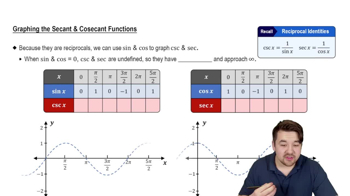Use symmetry to explain why.
∫⁴₋₄ (5𝓍⁴ + 3𝓍³ + 2𝓍² + 𝓍 + 1) d𝓍 = 2 ∫₀⁴ (5𝓍⁴ + 2𝓍² + 𝓍 + 1) d𝓍 .
 Verified step by step guidance
Verified step by step guidance Verified video answer for a similar problem:
Verified video answer for a similar problem:



 5:43m
5:43mMaster Definition of the Definite Integral with a bite sized video explanation from Patrick
Start learning